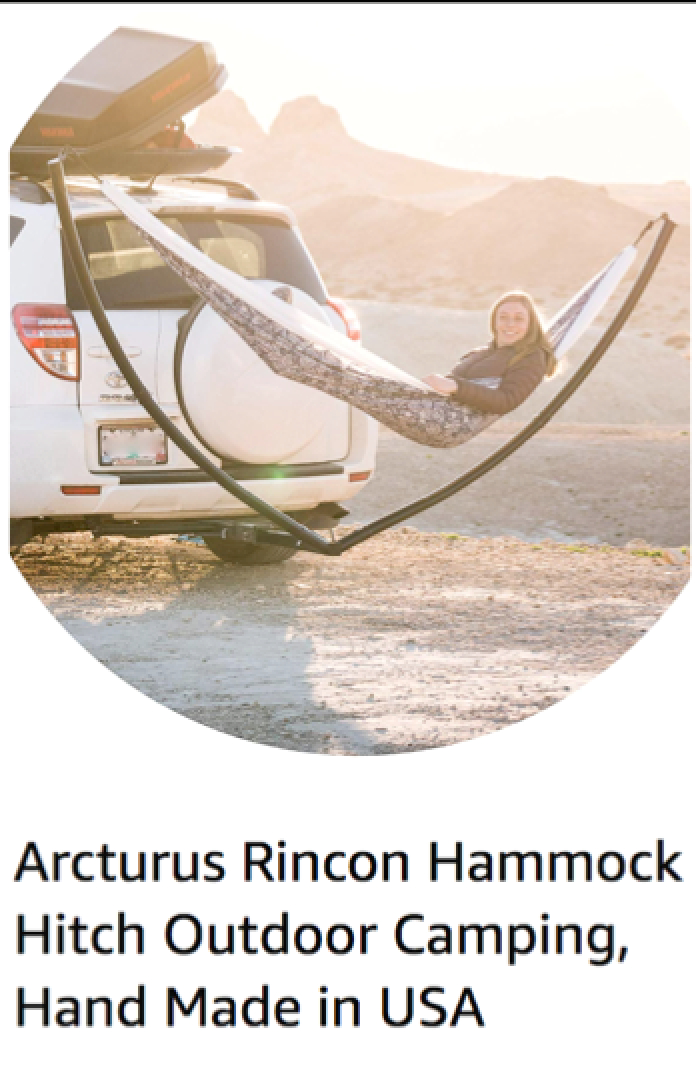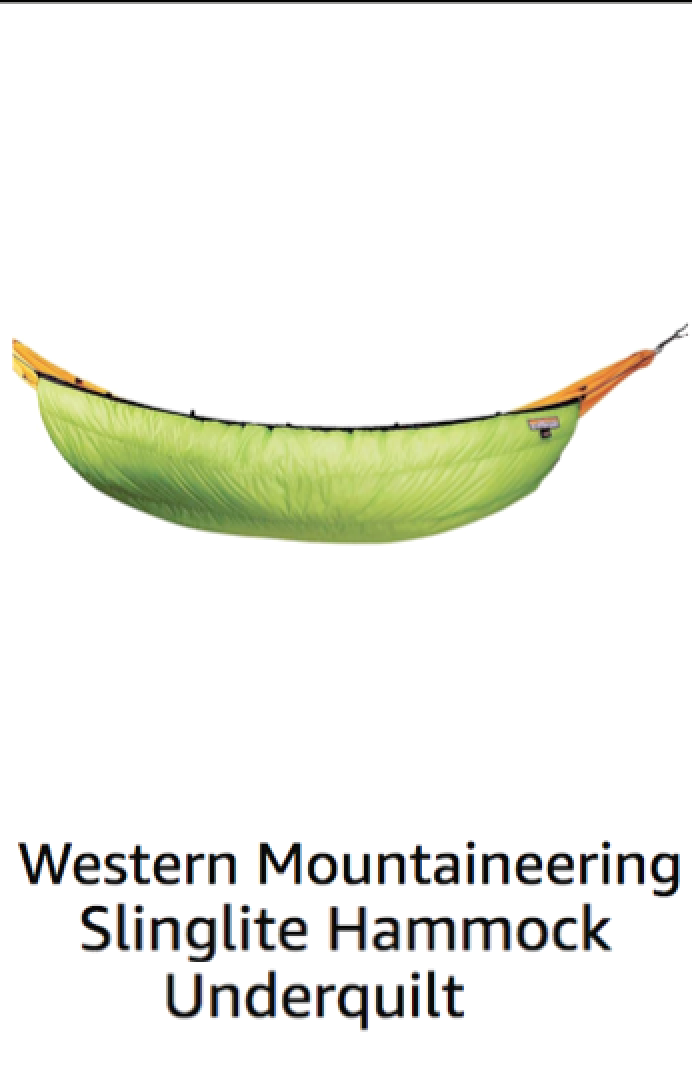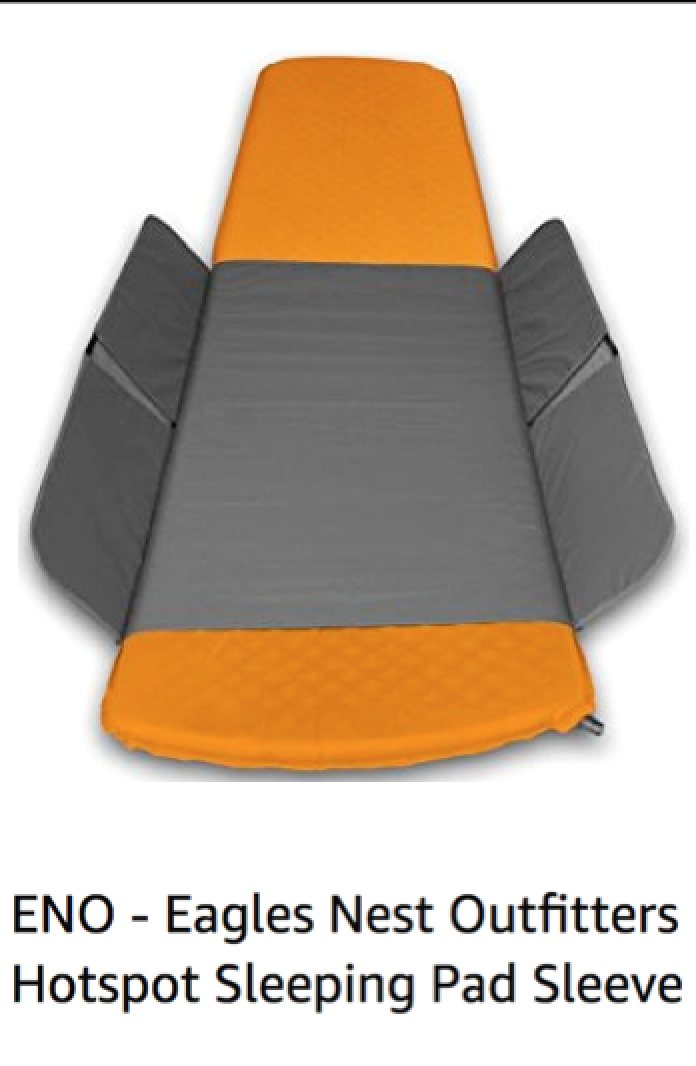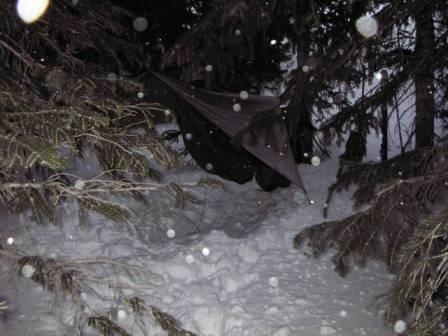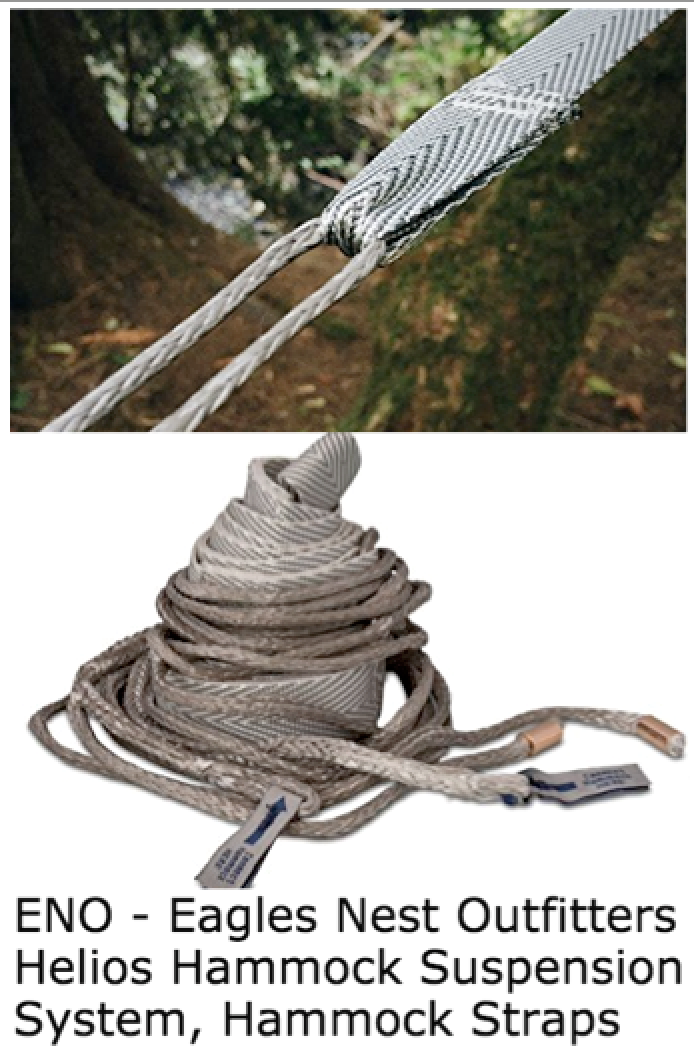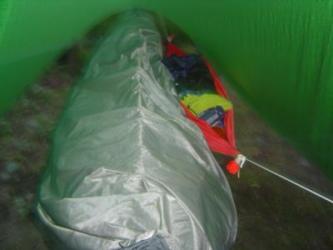Hammock Camping Overview
1. Why would I sleep in a hammock?
Comfort and convenience. How many times have you woken up after sleeping on rocks and roots and wished for a more comfortable bed? Maybe you bring an inflatable mattress that weighs over a pound, and still leaves you with sore shoulders in the morning, an aching lower back, and hip pointers. For me, these things aren't an issue when I sleep in my hammock. Since the hammock supports my whole body, instead of just an inflatable pad supporting my hips and shoulders, I don't get sore spots and it relieves the pressure on my lower back. The first few times I slept in a hammock I had a little lower back pain, but once I learned a few tricks like putting a clothing-filled stuff sack between my legs, the pain went away. I don't even toss and turn when I sleep in my hammock, because there are no pressure points to relieve.
Hammocks are extremely convenient when setting up camp. While others are still clearing their tent site of rocks and roots, or trying to find a level spot, I can just string it up and stake out my tarp. It only takes a few moments to find two suitable trees, and no ground clearing is necessary. I've slept right over rockpiles and on 45° ridges before, and some folks have slept OVER a running stream! It's the ultimate in Leave No Trace and stealth camping.
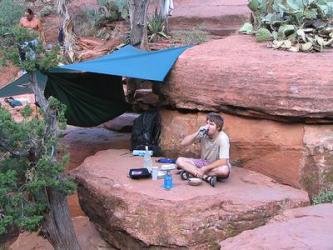 Photo by Dylan |
 Photo by OES |
2. How do I sleep in a hammock?
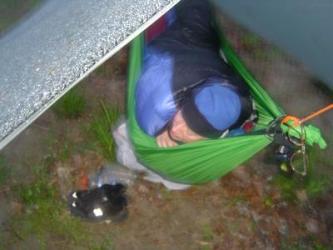
Youngblood sleeping on his stomach
Photo by Coy
The proper way to sleep in a hammock is on the diagonal. The hammock should have a fair amount of "sag" so it's not pulled tight. The amount of sag will vary by person and by hammock model. With my homemade hammocks without a fixed ridgeline, I like to have my hammock supports make about a 30° angle off horizontal. If a hammock has a fixed ridgeline, the length will determine the level of sag.
Once the sag is comfortable, climb in and lay with your feet on one side of the centerline and your head on the other side...diagonal across the center of the hammock. You should be able to lay almost completely flat this way.
But I'm a stomach sleeper...
Sleeping on the diagonal of a properly pitched hammock makes you lay almost flat, so it's possible to sleep on your stomach. I usually spend a few minutes on my stomach before I get up in the mornings. Sometimes I pull myself to the top of the hammock and use the edge as a pillow while I lay on my stomach and look out from under my tarp, too.
I'm a side/stomach sleeper at home, but I find that after a night or two in the hammock, I'm more comfortable on my back and side. It's simple to sleep on your side in a properly pitched hammock, too.
One great thing about hammocks is the many positions you can sleep in that you don't get on the ground. Sleeping on the ground, you're either on your back, stomach, or one side. In a hammock, you can sleep somewhere in-between each of these positions. For example, I often sleep about 45° onto my right side...not quite a side sleeper, but not on my back, either. It's a very comfortable position that I can't get comfortable in if I'm on the ground.
Here's a picture of Youngblood at the Southeast Hammock Hangers Association in Hot Springs, NC, sleeping on his stomach. Actually, he's only almost on his stomach...the bottom of his body is in one of those "half-side" positions.
4. How do I stay dry in a hammock?
Most hammockers use tarps to stay dry. If you've read Ray Jardine's
Beyond Backpacking, you know that sleeping under a tarp can actually keep you drier than sleeping in a tent. The same principles apply to hammocking, but it's even more comfortable and dry because you're off the ground, above worrying about runoff, drainage, wet duff, etc.
Read more about staying dry in a camping hammock! (Lots of pics)
Check out the hammock tarps on Amazon!
5. What about bugs?
Camping bug-free in a hammock is just as easy (or hard) as camping with bugs in any other shelter (except maybe an air-conditioned house). Some hammocks come with integrated bug nets, and others require users to buy aftermarket nets or make their own.
Learn about for bug-free hammock camping! (Lots of pics)
Check out some off-the-shelf bug-free hammock camping solutions at Amazon
6. How do I hang my hammock?
Hammocks have to be hung. (Well, they don't have to be hung...you can use them as a bivy on the ground...but work with me here.) There are several different suspension systems, and which one you choose is limited only your creativity. Most people choose based on their priorities - convenience, weight, bulk, expense, etc. As long as it's safe and doesn't damage the environment, just do what works!
Check out the info on hammock suspension! (Lots of pics)
Click Here to see what Amazon has for hammock suspensions--but be sure to get low-memory stretch options like polyester, amsteel, etc.
7. How do I make my own hammock?
The internet is full of do-it-yourself (DIY) ideas for making your own hammock, but I wanted to consolidate a
simple set of instructions for a newbie to begin sewing their own hammocks. Start
here to make your first hammock, then check out the
Homemade Gear page to make your accessories.
Click Here to make your own hammock (Instructional pics)
8. How does the weight compare to a ground setup?
If you compare hammock and ground setups with comparable features (bug protection, tarp size, comfort, etc), the weights are pretty close. It's possible for hammock setups to be lighter, but for the systems that most folks carry I think a hammocker will generally carry a few more ounces than a ground dweller. That's a small price to pay for the benefits of a hammock, IMO. Here's a chart comparing the weights of some ground and hammock setups for different temps.
Click Here to compare ground and hammock setups.
8. Where do I put my stuff?
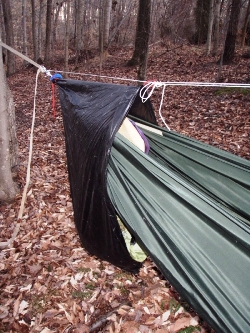
Slowhike's Storage End Caps
Photo by Slowhike
Organizing your stuff and keeping it out of the rain is a little different than a big tent with a large vestibule, but it's not too difficult. Some options:
- My favorite...get a gear hammock. I've made two types: a Pack Cover Gear Hammock and a kids hammock.
- Slowhike made Storage End Caps that hang on the end of the hammock...great idea.
- Put your stuff in a compactor bag or pack liner under your hammock. The tarp will keep it dry, and the bag will protect it from ground moisture. This is easiest and lightest if you already carry a bag liner.
- Hang it with your bearbag. Kind of a pain if you realize you need something after it's hung.
- Clip it to the end of your hammock with a 'biner. The tarp will keep it dry unless you get windblown rain. Very easy to get to your stuff, though.
- Sleep with your extra stuff and stick your non-framed pack under your legs for insulation.
- Get a Clark and put your stuff in the pockets. Or sew your own pockets into your hammock.
8. Other Stuff
What am I forgetting? What would you like to see?
Email me and I'll put it up when I get a chance.


